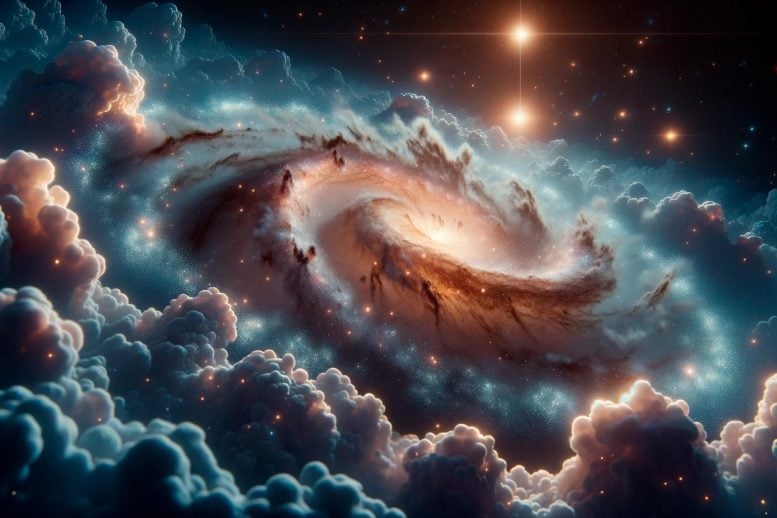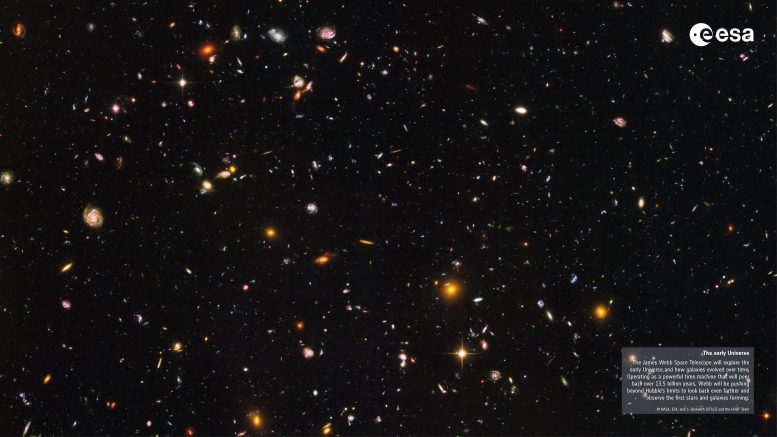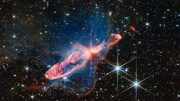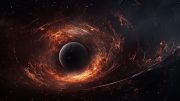
A new computer simulation aligns with the James Web Space Telescope’s observations of the early universe, accurately portraying early galaxy formations and the Universe’s first stars.
Researchers have created a model of the early Universe that better corresponds to observations.
Researchers have developed a new computer simulation of the early Universe that closely aligns with observations made by the James Webb Space Telescope (JWST).
Initial JWST observations hinted that something may be amiss in our understanding of early galaxy formation. The first galaxies studied by JWST appeared to be brighter and more massive than theoretical expectations.
The Renaissance Simulations
The intriguing findings, published recently in The Open Journal of Astrophysics, by researchers at Maynooth University, Ireland, with collaborators from the Georgia Institute of Technology (Georgia Tech), show that observations made by JWST do not contradict theoretical expectations. The so-called ‘Renaissance simulations’ used by the team are a series of highly sophisticated computer simulations of galaxy formation in the early Universe.

Researchers have developed a new computer simulation of the early universe that closely aligns with observations made by the James Webb Space Telescope (JWST). Credit: NASA, ESA and S. Beckwith (STScI) and the HUDF team
The simulation can resolve very small dark matter clumps and can track these clumps as they coagulate and build up as dark matter halos which then host the types of galaxies that we observe. The simulations can also model the formation of the very first stars that form in our Universe — Population III stars — which are expected to be much more massive and brighter than present-day stars.
Consistency With Current Models
The simulations used by the MU team showed that these galaxies are consistent with the models that dictate the physics of the cosmological simulations.
Speaking about the findings, lead author Joe M. McCaffrey, PhD student at Maynooth’s Department of Theoretical Physics, said: “We have shown that these simulations are crucial in understanding our origin in the Universe. In the future, we hope to use these same simulations to investigate the growth of massive black holes in the early Universe.”
The Power of JWST
Commenting on the research and future direction of his research team, Dr. John Regan, Associate Professor at Maynooth’s Department of Theoretical Physics, said: “The JWST has revolutionized our understanding of the early Universe. Using its incredible power we are now able to glimpse the Universe as it was only a few hundred million years after the Big Bang — a time when the Universe was less than 1% of its current age.
“What JWST is showing us is that the young Universe was bursting with massive star formation and an evolving population of massive black holes. The next steps will be to use these observations to guide our theoretical models — something which up until very recently was simply impossible.”
Reference: “No Tension: JWST Galaxies at z>10 Consistent with Cosmological Simulations” by Joe McCaffrey, Samantha Hardin, John H. Wise and John A. Regan, 27 September 2023, The Open Journal of Astrophysics.
DOI: 10.21105/astro.2304.13755









If the simulations don’t include Marklund convection, Birkeland Currents, the electrostatic forces and QED in 3D not one dimension, and don’t use Bessel functions in a force free aligned model, then it is just a complicated art simulation project, and not real astrophysics.
I had no idea what you said, so I looked it up. I like that, thank you. It does seem like forces would be needed for simulating accurate galaxy formation.
They’re using the Renaissance Simulator, I could find no mention of the phenomena you listed linked to the simulator. It’s at rensimlab dot github dot io, under the MIT licence for free software. It sounds like you’d have the experience to help develop, critique as an issue/bug, or just find it really interesting.
As art projects go, Birkeland Currents are very pretty and should be added regardless.
I interpret your last sentence as irony over the pseudoscience suggestions that Sf. R. Careaga mentioned and which are of no relevance for the dark energy-dark matter cosmology simulations mentioned.
The article is a bit short on describing the evidence though, which may open up to more of these non-useful suggestions of pseudoscience. [But of course they seem to be injected into the web anyway.] My interpretation of the work is that it suggests intermittent galaxy formation and that the luminosity observed is a measure of recent star formation rather than a steady state. The “duty periods” of the model galaxies fit both the numbers and luminosities of observed galaxies.
On top of that this work supports modern models of small, often early, galaxies not having sufficient mass to rapidly recirculate ejected gas. So in an engine analogy they look more like pulse engines than the smoother ICEs of today’s large galaxies. Predicting new phenomena adds to the model explaining old mysteries as proposing this is the correct physics.
To sum that up, the paper adds to the evidence that reject any huge significance of the suggested pseudoscience. [This will no doubt strengthen the pseudoscience belief that they say something relevant, since IIRC that comes out of statistics of conspiracy theory interactions on the web. The more such beliefs are dismissed, the stronger the believers have to defend them.]
“On top of that this work supports modern models of small, often early, galaxies not having sufficient mass to rapidly recirculate ejected gas.” As in massive star formation bursts are thought to eject gas away from the galaxy star formation regions. Some of it will be ejected into the intergalactic medium and have to be reintroduced by later infall.